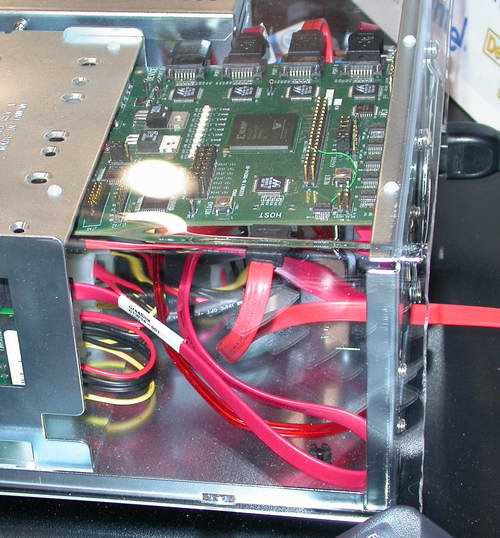Intel Developer Forum Spring 2003 - Technology Showcase
by Anand Lal Shimpi on February 19, 2003 12:51 PM EST- Posted in
- Trade Shows
Serial ATA II - Port Multipliers
Our final stop for the night leads us to another look at Serial ATA II, in particular one feature of the spec known as a port multiplier.
One of the biggest complaints about the Serial ATA spec is that you can only have one device per channel, meaning that if you want 6 Serial ATA drives, you'll need 6 Serial ATA connectors and 6 cables. This isn't a huge deal for desktop systems, but in servers where more than 6 drives is a possibility, it does become a concern.

A crude implementation of what a Serial ATA II Port Multiplier can do, the
mass market solution could be significantly smaller in size
One solution to the problem is defined in the Serial ATA II spec through port multipliers. As the name implies, a port multiplier will take one Serial ATA channel and share the bandwidth with up to 15 devices. All that is necessary is a small piece of silicon and the extra connectors, and you essentially have a Serial ATA switch that lets you connect multiple drives to a single Serial ATA connector. Remember that you're sharing the bandwidth of this single Serial ATA link, which at current point is only 150MB/s; if split among 10 drives, 150MB/s is no longer anything to write home about, but with Serial ATA II we'll be dealing with much higher bandwidths when the technology surfaces in the market, so the 150MB/s limit won't be a concern.
Final Words
There's very little left at the Technology Showcase, so you can expect coverage from the keynotes and special sessions for the rest of the week as we continue to cover the Spring 2003 Intel Developer Forum. As usual, stay tuned...










0 Comments
View All Comments